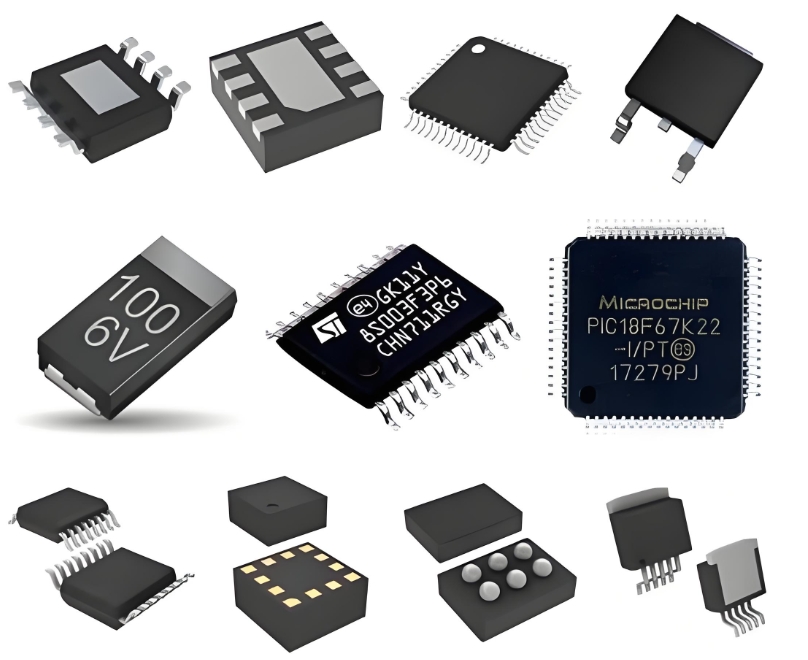**High-Performance Design with the AD9745BCPZRL 14-Bit DAC: Architecture and Application Considerations**
The relentless pursuit of higher fidelity and precision in digital-to-analog conversion is a cornerstone of modern electronic systems. The **AD9745BCPZRL**, a 14-bit, 165 MSPS digital-to-analog converter (DAC) from Analog Devices, stands as a pivotal component for designers aiming to achieve high dynamic performance in demanding applications. This article delves into the core architecture of this advanced DAC and outlines critical considerations for its successful deployment.
**Architectural Foundation: The Core of Performance**
The AD9745BCPZRL is built upon a segmented current-steering architecture, a design choice paramount to its high-speed and high-performance characteristics. The 14-bit input data word is typically segmented, often with the top four Most Significant Bits (MSBs) decoded into 15 equal current sources. The remaining ten Least Significant Bits (LSBs) drive a traditional binary-weighted DAC. This **segmentation technique is crucial for minimizing glitch energy and improving integral non-linearity (INL)**, two key parameters for signal purity.
The device features a proprietary switching scheme that further enhances performance by reducing noise and spurious components. Its differential current outputs are designed to be driven directly into a transformer or an operational amplifier configured as an I-V converter. This differential operation is fundamental for rejecting common-mode noise, a significant advantage in mixed-signal environments. The inclusion of a **1.2V internal reference** (with option for external override) provides a stable foundation for accurate conversion, while the programmability of the full-scale output current adds valuable design flexibility.
**Critical Application Considerations for Optimal Performance**
Successfully integrating the AD9745BCPZRL into a high-performance design requires meticulous attention to several areas beyond simply reading the datasheet.
1. **Power Supply and Decoupling:** As a high-speed mixed-signal device, clean and stable power is non-negotiable. **Aggressive and strategic decoupling is mandatory**. A combination of bulk, ceramic, and possibly ferrite beads should be used on both the analog (AVDD) and digital (DVDD) supplies. The placement of decoupling capacitors must be as close as possible to the supply pins, with minimal loop area to suppress high-frequency noise effectively.

2. **Digital Data Interface and Clocking:** The quality of the clock signal is arguably as important as the DAC itself. A **low-jitter clock source is essential** to prevent phase noise from degrading the dynamic performance of the output analog signal. The digital input lines, running at high speeds, must be treated as transmission lines. Proper termination and controlled impedance routing are necessary to prevent reflections and data errors. Keeping these digital traces away from sensitive analog output paths is critical to avoid corrupting the output.
3. **Output Reconstruction and Filtering:** The current outputs (IOUTA and IOUTB) must be properly terminated. Driving a differential transformer-coupled load is a common method to generate a single-ended signal while maintaining excellent common-mode rejection. Alternatively, using a high-speed, low-distortion differential amplifier for I-V conversion is equally valid. In both cases, a **well-designed reconstruction filter** is required to remove the high-frequency images (Nyquist ghosts) present at the DAC’s output. The design of this anti-imaging filter is a critical step in defining the final system performance.
4. **PCB Layout as a Component:** For a DAC operating at 165 MSPS, the printed circuit board (PCB) layout is not just a connection medium but an active component of the circuit. A robust, multi-layer board with dedicated ground and power planes is mandatory. The layout must enforce a clear **partitioning of analog and digital sections**, with the AD9745 straddling these domains. The analog output traces should be short, differential, and symmetrically routed to preserve signal integrity.
**ICGOO**D**FIND**: The AD9745BCPZRL is a high-performance DAC whose potential can only be fully unlocked through thoughtful design. Its segmented architecture provides the foundation for speed and accuracy, but its ultimate performance is dictated by the implementation. **Meticulous attention to power integrity, clock quality, output interfacing, and, most importantly, PCB layout separates a mediocre design from an exceptional one.**
**Keywords**:
1. **Segmented Architecture**
2. **Dynamic Performance**
3. **Clock Jitter**
4. **PCB Layout**
5. **Reconstruction Filter**
